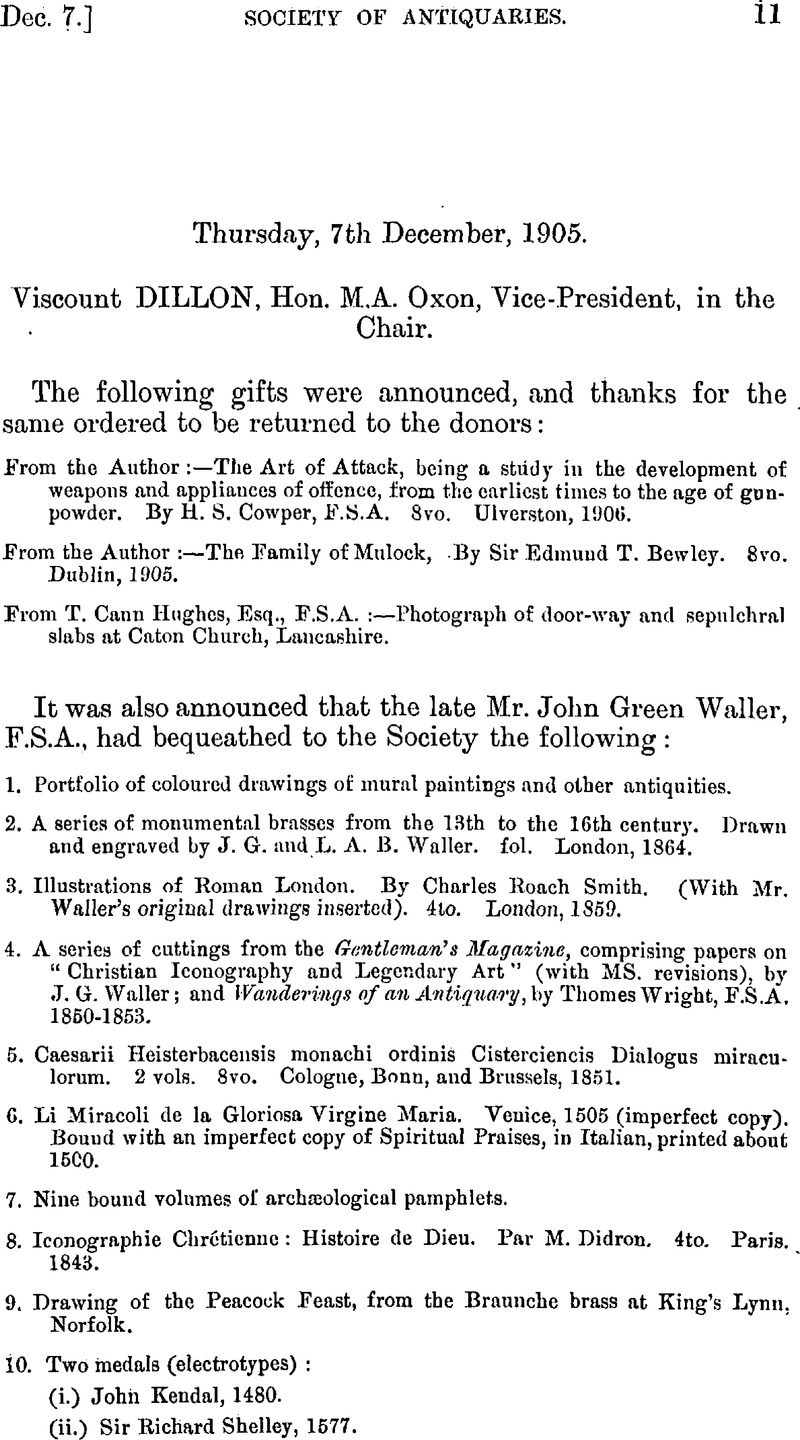No CrossRef data available.
Article contents
Thursday, 7th December, 1905
Published online by Cambridge University Press: 10 May 2010
Abstract

- Type
- Proceedings
- Information
- Copyright
- Copyright © The Society of Antiquaries of London 1905
References
page 13 note * This town ditch, which was a receptacle for all kinds of refuse, was 200 feet wide and 40 feet deep, and according to the City records was filld up and leveled in 1553, a fact also recorded in the Chronicle of the Grey Friars.
page 13 note † Archœological Journal, lix. 238.
page 14 note * Transactions of the London and Middlesex Archœological Society, v. 403.
page 16 note * Vol. xxxvi. 266, and xxxvii. 37–38.
page 16 note † See Proceedings, iii. 165–7. Another inscribed cross from Bury St. Edmund's was exhibited to the Society by Mr. Edmund Waterton, F.S.A., on 26th November, 1863. See Proceedings, 2nd S. ii. 301.
page 16 note ‡ Proceedings, iv. 212, 213.
page 17 note * Vol. xxv. 237.
page 17 note † Engraving in Proceedings, 2nd S. xx. 169.
page 21 note * There is ample evidence that lead was regularly cast for roofing in the middle ages, e.g. the Pipe Roll for 28 Edward III. has among the charges of the 27th year (1352–3—1353–4) for works in Windsor Castle : “fundacione jactacione et posiciono. xx. carrat. plumbi super tectura Capelle Regis ibidem—vj. li.”—W. H. ST. J. H.
page 26 note * Since writing this paper, I am able to add evidence that spoons were marked on the back of the bowl. In an Inventory of the Crown Jewels, taken in 1329, are 51 silver spoons ” signata in parte exteriori de quodam leopardo” or “signata de uno leopardo extra.” And in an Inventory of the King's Treasury, taken in 1399, are 26 silver spoons marked with a letter ![]() on the back with gilt acorns at the ends [xxvi guillors d'arq m'chez d'un Ire
on the back with gilt acorns at the ends [xxvi guillors d'arq m'chez d'un Ire ![]() en le dose ove accrons enorrez a les fines].
en le dose ove accrons enorrez a les fines].




